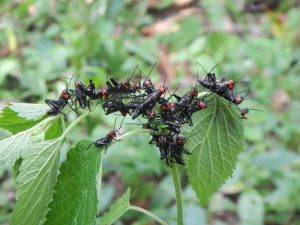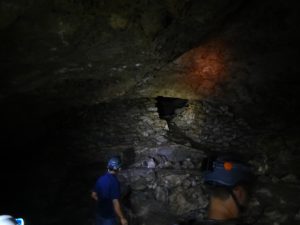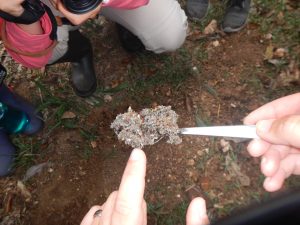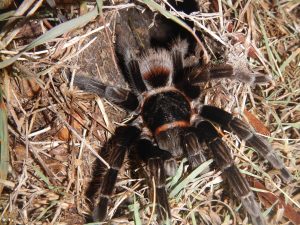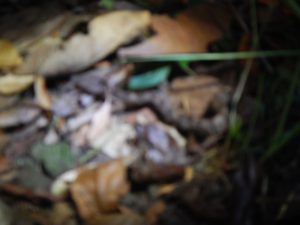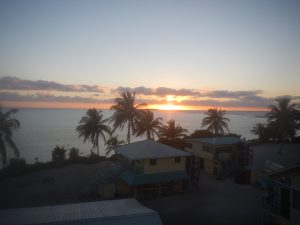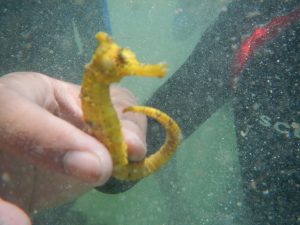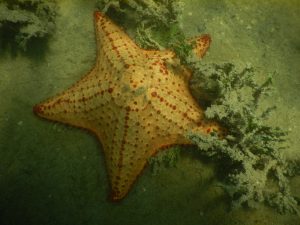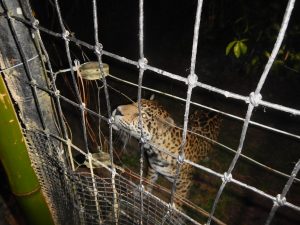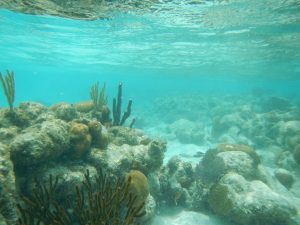Having been exposed firsthand to both the tropical rainforest and the coral reef in the past two weeks, I now have a much better understanding of both ecosystems and their similarities. They both have very complex structures. The rainforest has multiple layers from the forest floor to the canopy, with varying light exposure and nutrient availability. On the other hand, the reef structure created by the stony corals give rise to nooks and crannies with varying light exposure and nutrient availability as well. This creates a multitude of microhabitats where organisms with different adaptations can colonize and flourish in, which gives rise to high level of diversity.
Both ecosystems rely on a specific base organism as their foundation, which are trees for the rainforest and stony corals for the coral reef. Similarly, we’ve learned that both the trees and stony corals flourish in a relatively nutrient-poor environment, and when there is nutrient enrichment, they tend to be outcompeted by other organisms such as ferns and green algae respectively.
From observations, the two ecosystems are different in their possible height. Coral reefs seem to be unable to grow to too deep, possibility due to light being unable to penetrate deep waters. However, forest canopies are able to stretch up to 30 meters high. The two ecosystems seem to also differ in their floor diversity. I found many organisms roaming the forest floors when I was hiking. However, the sandy floor of the coral reef seems to not hold that much life. It might be because of the presence of leaf litter in the rainforest which is a source of nutrients for organisms.
I came into this course with a pretty high expectation already because I had talked to Randy from the previous class. However, there are certainly many things that words cannot describe and I definitely experienced a lot more than what I heard about. The favorite part of this course, besides gaining so much new knowledge about the two ecosystems and EBIO in general, was getting the opportunity to work with and learn from so many individuals who are passionate about their fields of study. I could listen to Adrienne talk for hours about the different aspects of the coral reef and the stories of her experience working out in the field. I was inspired by Scott’s digging of the ants nest and his careful explanation of the social hierarchy of leaf cutter ants. I marveled at Therese’s journey through Gabon and her overcoming of the obstacles she faced while doing research there. Besides them, there were so many experts who I have met and learned from, such as Aimee from Loyola University who taught me how to fish for tarantulas in their holes, and Javy who gave me a better understanding of Belize’s national history. Meeting and working with such passionate people have inspired me want to keep learning every day.
My least favorite part of the course gotta be those moths that kept divebombing me in the face in Las Cuevas but that’s just a small matter and hopefully I can become more zen in the future like Tian-Tian was.
Having been through this course, I have firstly gained a deeper understanding of the importance of coral reefs and rainforests both to nature and to humans. I have seen firsthand the beauty of both ecosystems and hope that future generations will get to see them too. The second important thing I have gained from the course is the ability to snorkel and dive. This is not to be taken literally as I came into the course as a complete novice with regards to snorkeling, and struggled badly in the first few days. I did not even attempt a dive into the seafloor until towards the end of the second day. However, I kept trying and kept pushing to overcome the psychological barriers I had and eventually became more comfortable in the sea and so I felt that this was one of my major achievements in this course. Last but not least, I came into the class not knowing anyone and I certainly was not expecting to get along so well with my course mates as I did. It is interesting to look back to the first day and remember how reserved everyone was. Over the two weeks, we started opening up to one another, playing pranks on each other, and making memories together that we’ll never forget. It was awesome how much we have bonded over the two weeks, and I certainly look forward to continue building these friendships that I have made.
Signing out,
Damien

